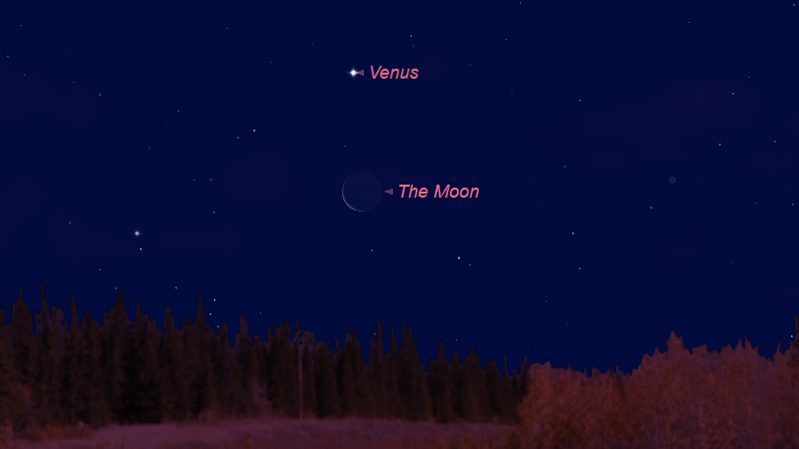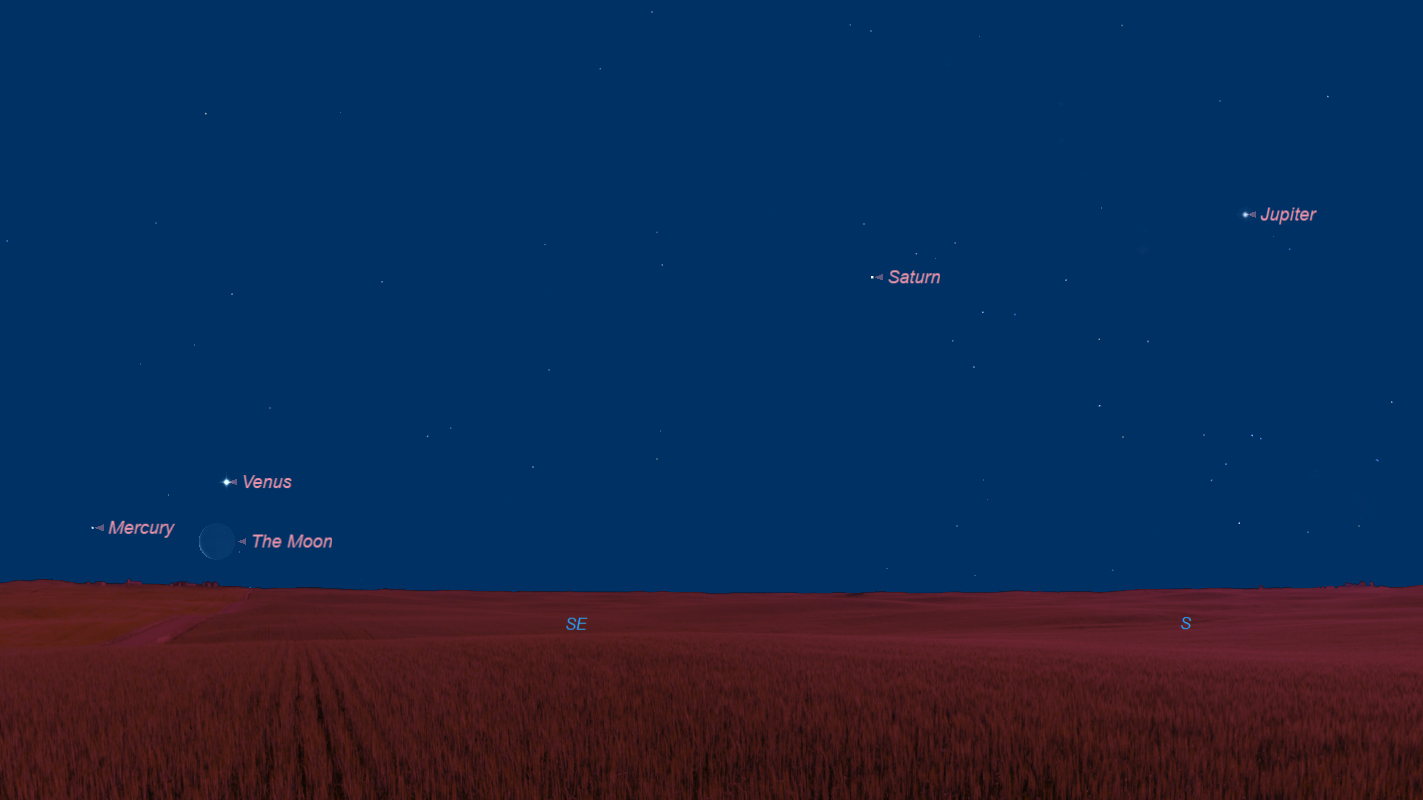See Venus Shine with the Crescent Moon Tuesday Morning!

Venus will meet up with a slender, crescent moon on Tuesday (April 2), and you can catch the celestial pair together in the predawn sky.
The 27-day-old moon will pass about 2.5 degrees to the south of the bright planet Venus when it makes its closest approach to the planet at 2:11 a.m. EDT (0611 GMT), according to the skywatching website In-The-Sky.org. About 2 hours earlier, the two objects will be in conjunction, meaning they will share the same right ascension, or celestial longitude.
During this conjunction and close approach, both Venus and the moon will be below the horizon for skywatchers in the U.S. However, they will still appear close together when they rise in the predawn sky a few hours later.
Related: When, Where and How to See the Planets in the 2019 Night Sky
To get the best view, you'll want to find a flat, clear horizon to the east that is unobstructed by buildings, trees or mountains. That's because Venus and the moon will still be pretty close to the horizon when the sun rises and washes them out with daylight.
In New York City, for example, Venus will rise at 5:24 a.m., followed by a moonrise at 5:43 a.m. local time. The pair will be visible for about an hour before the sun rises at 6:38 a.m., when they will be only 9 degrees above the horizon. For reference, your fist held at an arm's length is about 10 degrees wide. You can figure out exactly what time the sun, moon and planets rise and set from your location with this astronomy calculator at timeanddate.com.
Skywatchers in the Southern Hemisphere will have a better view of Venus and the moon this week, because the planet will rise even earlier in that part of the globe. On the other hand, skywatchers in the far north may not get to see the pair at all, because they will rise too close to the sun, according to EarthSky.org.
Breaking space news, the latest updates on rocket launches, skywatching events and more!
Over the next few days, the crescent moon will become thinner and thinner until it essentially disappears from view on April 5, when it reaches a new phase. While the moon is temporarily absent from the night sky, you can take the opportunity to check out some other visible planets. Jupiter and Saturn will already be high in the sky by the time Venus rises each morning, and Mars can be seen for a few hours after sunset. And if you're doing some early-morning skywatching, keep an eye out for the tiny planet Mercury, which will be faintly visible near the horizon right before sunrise.
- Spring Skywatching: Who Let The Dogs Out?
- Venus and Jupiter Shine Over a Dreamy Lunar Eclipse (Photo)
- Space Calendar 2019: Launches, Sky Events & More
Email Hanneke Weitering at hweitering@space.com or follow her @hannekescience. Follow us on Twitter @Spacedotcom and on Facebook.

Hanneke Weitering is a multimedia journalist in the Pacific Northwest reporting on the future of aviation at FutureFlight.aero and Aviation International News and was previously the Editor for Spaceflight and Astronomy news here at Space.com. As an editor with over 10 years of experience in science journalism she has previously written for Scholastic Classroom Magazines, MedPage Today and The Joint Institute for Computational Sciences at Oak Ridge National Laboratory. After studying physics at the University of Tennessee in her hometown of Knoxville, she earned her graduate degree in Science, Health and Environmental Reporting (SHERP) from New York University. Hanneke joined the Space.com team in 2016 as a staff writer and producer, covering topics including spaceflight and astronomy. She currently lives in Seattle, home of the Space Needle, with her cat and two snakes. In her spare time, Hanneke enjoys exploring the Rocky Mountains, basking in nature and looking for dark skies to gaze at the cosmos.

